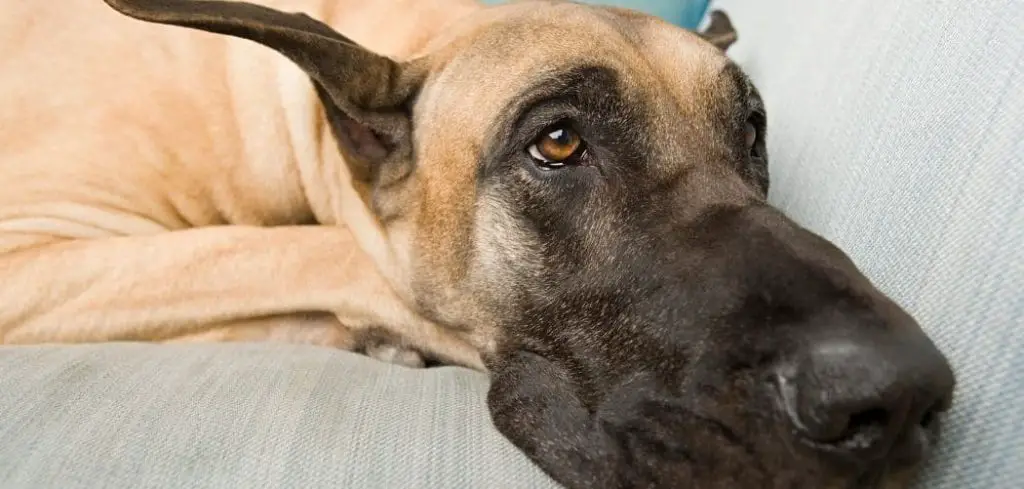When your dog starts guarding their food but then refuses to eat it, it can leave you feeling confused and concerned.
Food guarding is usually a sign of stress, fear, or past trauma—but pairing it with not eating makes it a more serious behavior to watch closely.
We outline the common causes of dog guarding food and not eating, what you can do at home, and when to seek veterinary help.
Dog Getting Skinny and Not Eating — Why It Happens
A dog guarding food but not eating may be experiencing anxiety, pain, or resource guarding behavior rooted in insecurity or past trauma. This can happen if the dog feels threatened, is unwell, or has developed a negative association with eating. It’s a sign of emotional or physical distress.

Common Causes of Dog Guarding Food and Not Eating
1. Resource Guarding Behavior
Resource guarding is a natural survival instinct where a dog protects things they value—like food, toys, or even people. It’s common in rescue dogs or those from multi-pet households.
Your dog might be so focused on guarding their food bowl from perceived threats that they don’t relax enough to eat. This behavior can also stem from anxiety or previous trauma.
2. Pain or Dental Issues
Painful teeth, oral infections, or jaw injuries can make eating physically difficult, even if the dog is hungry.
Guarding the food could be a defensive action to keep others away while they assess their discomfort.
Signs to look for:
Pawing at the mouth
Drooling
Reluctance to chew
Favoring soft foods over kibble
Related: Dog gagging and not eating (Here’s why)
3. Anxiety or Stress
Dogs experiencing stress may show unusual behaviors, including food guarding and appetite loss. Changes in the household, a new pet, loud noises, or separation anxiety are common triggers.
Behavior signs:
Pacing around the food bowl
Growling if approached while eating
Hiding the food and walking away
4. Past Trauma or Learned Behavior
Dogs that were previously neglected, abused, or forced to compete for food may have developed guarding behavior.
This can persist even in safe environments, leading to confusing eating habits.
Common in:
Rescue or shelter dogs
Dogs from puppy mills or large kennels
5. Nausea or Digestive Upset
If your dog is nauseous or has an upset stomach, they might guard the food instinctively, but refrain from eating it due to discomfort.
Other symptoms may include:
Lip licking
Vomiting or dry heaving
Eating grass or licking floors
6. Neurological or Behavioral Disorders
Conditions like canine cognitive dysfunction (doggy dementia) or compulsive disorders can trigger abnormal feeding behaviors.
A dog might guard the food as a reflex but forget to eat or lose interest altogether.
What You Can Do at Home
1. Don’t Punish the Behavior
Avoid scolding or forcefully removing the food. Punishment can worsen guarding and erode trust.
2. Feed in a Quiet, Safe Space
Give your dog a calm area away from other pets or children. Use a separate room or a crate where they can eat in peace.
3. Establish a Routine
Feed at the same times every day. Routine helps reduce anxiety and reinforces safe eating habits.
4. Try Hand-Feeding or Puzzle Toys
Offering food directly from your hand or using puzzle feeders can build positive associations and reduce guarding anxiety.
5. Evaluate Food Type
If your dog is in pain or nauseous, switching to softer or more digestible food might encourage eating. Warming up wet food slightly can make it more appealing.
6. Use Training and Desensitization
With professional guidance, you can use positive reinforcement to slowly reduce guarding behaviors. Reward calm behavior around the food bowl.
When to See a Veterinarian
Contact your vet if:
The guarding is new or suddenly escalates
Your dog hasn’t eaten for more than 24 hours
There are signs of pain, vomiting, or lethargy
Your dog becomes aggressive toward people or pets
Your vet may:
Conduct a dental exam
Test for infections or digestive issues
Refer you to a behaviorist or trainer
Related: Dog getting skinny and not eating (What to do right away)
Key Takeaway
A dog that guards their food but won’t eat is displaying a complex mix of instinct, emotion, and possibly pain. While some cases are rooted in behavior and training, others may point to underlying health issues. Pay attention to your dog’s full body language, consider their history, and always consult a vet if you’re concerned.
Understanding and patience go a long way in helping your dog feel secure—and encouraging them to eat again in peace.
